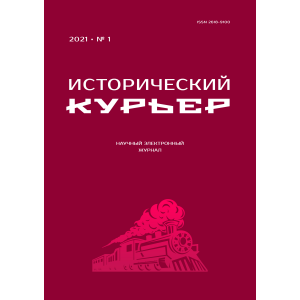According to the author of “The Little Prince’, we all “come from childhood”. It is in childhood that the main ideological attitudes guiding a person in later life are laid down. A huge influence on the formation of personality, and sometimes on the whole fate, is exerted by those people and the environment whom a baby and then a growing child faces. It seems that it is no accident that at the turn of the 20th – 21st centuries, during a period of deep social and political transformations, the appeal to the experience of educating and transmitting traditional cultural values to young people has become especially relevant.
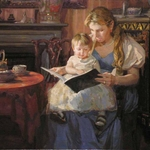 “Coming From Childhood”: the Experience of Pedagogy of the Past Years
“Coming From Childhood”: the Experience of Pedagogy of the Past Years
S.V. Filatova
Children’s Reading in the Noble Environment in the Late 18th – First Half of the 19th Century: Functions, Practices, Structure, Interests (Based on the Materials of the Penza Province)
The article is devoted to the phenomenon of children’s reading in Russia in the late 18th – early 19th centuries. The author uses examples from biographies of writers and memoirists whose childhood was spent in the Penza province (M.N. Zagoskin, E.A. Drashusova, M.Yu. Lermontov, F.I. Buslaev, I.A. Salov, V.A. Insarsky) to examine the peculiarities of children’s reading in Russian noble families, and to characterize the reading circle and reading preferences of the younger generation. The reference to these sources allows us to draw a conclusion about the formation in some cases of a systemic book culture already in childhood.
Publishing: 28/02/2021
How to cite: Filatova S.V. Children’s Reading in the Noble Environment in the Late 18th – First Half of the 19th Century: Functions, Practices, Structure, Interests (Based on the Materials of the Penza Province) // Historical Courier, 2021, No. 1 (15), pp. 9–20. [Available online:] http://istkurier.ru/data/2021/ISTKURIER-2021-1-01.pdf
 “Coming From Childhood”: the Experience of Pedagogy of the Past Years
“Coming From Childhood”: the Experience of Pedagogy of the Past Years
M.D. Kushnareva
The Role of Religious Education in the Fate, Social and Educational Activities of the Yakutsk Merchant of the Second Guild P.I. Kushnarev (Late 19th – Early 20th Century)
The article analyzes the role of religious education received by the Yakutsk merchant of the 2nd guild P.I. Kushnarev in his fate and social and educational activities in the late 19th – early 20th century. The reconstruction of certain periods of P.I. Kushnarev’s life is presented on the basis of his autobiography, preserved in the author’s personal archive. The basic principles of P.I. Kushnarev’s upbringing in the family of Russian peasants (who were the Old Believers), chief among which were work, respect for parents, independence, literacy, and knowledge of religious texts, are defined. P.I. Kushnarev’s religious upbringing was reflected in his further activities and personal life.
Publishing: 28/02/2021
How to cite: Kushnareva M.D. The Role of Religious Education in the Fate, Social and Educational Activities of the Yakutsk Merchant of the Second Guild P.I. Kushnarev (Late 19th – Early 20th Century) // Historical Courier, 2021, No. 1 (15), pp. 21–30. [Available online:] http://istkurier.ru/data/2021/ISTKURIER-2021-1-02.pdf
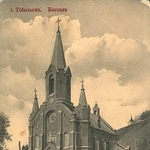 “Coming From Childhood”: the Experience of Pedagogy of the Past Years
“Coming From Childhood”: the Experience of Pedagogy of the Past Years
L.K. Ostrovsky
Poles-Students and the Polish School in West Siberian Cities (1880s – 1920)
The article analyzes the main directions of the development of the Polish school in Western Siberia in the late 19th – early 20th centuries. The proportion of children from Polish families among students of Orthodox schools in the cities of Western Siberia and the peculiarities of the work of Polish schools in the region (schools in Catholic parishes and Roman Catholic schools that began to be established in 1893) are revealed. The influence of the First World War, the February Revolution of 1917, and the establishment of Soviet power on the development of Polish schools is shown. The author describes the activities of Polish public organizations to support educational institutions for children from Catholic families.
Publishing: 28/02/2021
How to cite: Ostrovsky L.K. Poles-Students and the Polish School in West Siberian Cities (1880s – 1920) // Historical Courier, 2021, No. 1 (15), pp. 31–36. [Available online:] http://istkurier.ru/data/2021/ISTKURIER-2021-1-03.pdf
 Childhood in a Merchant Family
Childhood in a Merchant Family
E.V. Komleva
The Theme of Childhood in the Epistolary Complexes of Russian Merchants of the Late 18th – 19th Century
The article analyzes the mentions of children in merchant correspondence of the late 18th – 19th century, including large epistolary complexes of Irkutsk merchants Basnins, Krasnoyarsk merchants Larionovs, Ustyug merchants Buldakovs, Moscow merchants Kalashnikovs. The preserved sources allow us to get information about the attitude toward children in merchant families, about children’s clothing, common practices of upbringing and education of the younger generation. As an appendix, some ego texts written by the children of merchants themselves are published.
Publishing: 28/02/2021
How to cite: Komleva E.V. The Theme of Childhood in the Epistolary Complexes of Russian Merchants of the Late 18th – 19th Century // Historical Courier, 2021, No. 1 (15), pp. 37–51. [Available online:] http://istkurier.ru/data/2021/ISTKURIER-2021-1-04.pdf
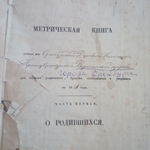 Childhood in a Merchant Family
Childhood in a Merchant Family
E.N. Abdrakhmanova
Metrical Books as a Source of Information about Children in Merchant Families of Orenburg in 1862–1869
The article presents the results of the analysis of information about children in merchant families contained in the metrical books of churches in Orenburg in the second half of the 19th century. The number of boys and girls born is identified. The author shows how merchants gave names to their children and chose godparents. Information on the birth rate in local merchant families is compared with data from neighboring and central provinces.
Publishing: 28/02/2021
How to cite: Abdrakhmanova E.N. Metrical Books as a Source of Information about Children in Merchant Families of Orenburg in 1862–1869 // Historical Courier, 2021, No. 1 (15), pp. 52–65. [Available online:] http://istkurier.ru/data/2021/ISTKURIER-2021-1-05.pdf
 Childhood in a Merchant Family
Childhood in a Merchant Family
I.V. Maslova
The World of Childhood in Merchant Families of the Russian Empire in the 19th – Early 20th Centuries
The article is devoted to the study of the history of childhood in the merchant families of the Russian Empire in the second half of the 19th – early 20th century. The author considers the temporal and spatial characteristics inherent in the status of a child in a merchant family, as well as the world of things. The main sources for illustrating each of these categories are the memories of the childhood years of two representatives of merchant families: T. Karson and S. Durylin. Memories written by a man and a woman, on the one hand, allow us to identify the specifics of the female or male perception of the child’s world, on the other, to determine the basic cultural characteristics inherent in childhood in merchant families.
Publishing: 28/02/2021
How to cite: Maslova I.V. The World of Childhood in Merchant Families of the Russian Empire in the 19th – Early 20th Centuries // Historical Courier, 2021, No. 1 (15), pp. 66–73. [Available online:] http://istkurier.ru/data/2021/ISTKURIER-2021-1-06.pdf
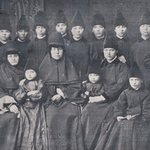 Children and Society
Children and Society
I.G. Fedorov
Minor Residents of the Orthodox monasteries of the Yeniseisk and Krasnoyarsk Dioceses in the Pre-Soviet Period (1861–1919)
The article deals with a little-studied issue from the history of the Yeniseisk and Krasnoyarsk diocese established in 1861 – minors (i.e. persons under the age of 21) living in local monasteries. On the basis of the statistical monastic documents stored in the fonds of the State Archive of the Krasnoyarsk Territory and related to 1861–1919, an analysis of the quantitative and qualitative characteristics of the composition of children and adolescents who were in monasteries was carried out, including the social categories that were sources of replenishment of underage residents of monasteries.
Publishing: 28/02/2021
How to cite: Fedorov I.G. Minor Residents of the Orthodox monasteries of the Yeniseisk and Krasnoyarsk Dioceses in the Pre-Soviet Period (1861–1919) // Historical Courier, 2021, No. 1 (15), pp. 74–82. [Available online:] http://istkurier.ru/data/2021/ISTKURIER-2021-1-07.pdf
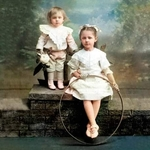 Children and Society
Children and Society
E.V. Burlutskaya
Leisure in Children’s Daily Life in the Public Space of Post-Reform Orenburg Based on the Materials of the Orenburg Press (the Second Half of the 19th – Early 20th Century)
The subject of the research in the framework of the article is children’s leisure in everyday life, carried out in the conditions of the public space of the post-reform Orenburg in the second half of the 19th – early 20th century. From the perspective of key functions, the author analyzes various forms of children’s leisure: dance evenings, Christmas trees, visits to the circus and zoo, outdoor walks, sports. The differences in the organization of children’s leisure activities in different social groups related to their social status and the social roles of its carriers are revealed. It is determined that moralizing, education was the key task of almost any variant of children’s leisure.
Publishing: 28/02/2021
How to cite: Burlutskaya E.V. Leisure in Children’s Daily Life in the Public Space of Post-Reform Orenburg Based on the Materials of the Orenburg Press (the Second Half of the 19th – Early 20th Century) // Historical Courier, 2021, No. 1 (15), pp. 83–95. [Available online:] http://istkurier.ru/data/2021/ISTKURIER-2021-1-08.pdf
 Children and Society
Children and Society
M.A. Gordeeva
Legal Status of Peasant Orphans in the Tomsk Province in the Late 19th – Early 20th Century: Formal Rules and Their Implementation
The article is devoted to the problem of observance of the rights of children of the peasant class in the Tomsk province in the late 19th – early 20th century. The procedure for appointing guardianship is described, violations and conflict situations at each of its stages are revealed. The author has established that despite the lack of regulation of this mechanism in the official legislation, this one of the most important social functions of the peasant community was performed consistently and clearly. All violations were recorded, the instructions for their elimination were promptly executed. This proves that the rights of orphans were respected and they successfully integrated into the peasant society.
Publishing: 28/02/2021
How to cite: Gordeeva M.A. Legal Status of Peasant Orphans in the Tomsk Province in the Late 19th – Early 20th Century: Formal Rules and Their Implementation // Historical Courier, 2021, No. 1 (15), pp. 96–104. [Available online:] http://istkurier.ru/data/2021/ISTKURIER-2021-1-09.pdf
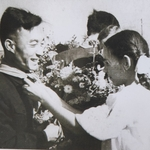 Children and Society
Children and Society
W. Wang
From the History of Children’s and Youth Exchanges Between China and Russia (the Second Half of the 20th – Early 21st Century)
The article is devoted to the history of children’s and youth exchanges between China and Russia during the second half of the 20th – early 21st century. The author characterizes the main stages of the development of bilateral relations in the field of youth cooperation; reveals the influence of various factors on them, the main of which is the political cooperation of both countries and the agreements reached within its framework. Numerous examples from the history of youth contacts between Chinese and Russian students in different time periods are given. The conclusion is made about the importance of children’s and youth meetings and events, which have a profound positive impact on the development of friendly and good-neighborly relations between the People’s Republic of China and the Russian Federation.
Publishing: 28/02/2021
How to cite: Wang W. From the History of Children’s and Youth Exchanges Between China and Russia (the Second Half of the 20th – Early 21st Century) // Historical Courier, 2021, No. 1 (15), pp. 105–115. [Available online:] http://istkurier.ru/data/2021/ISTKURIER-2021-1-10.pdf
 Children and Society
Children and Society
V.G. Datsyshen
Children and Childhood in Soviet-Chinese Relations in the 1950s
The article is devoted to the problems of the place and role of children in the system of “people’s diplomacy” that took place in Soviet-Chinese relations in the 1950s. On the basis of archival and published sources of personal origin, as well as materials clerical nature is painting for the participation of children’s organizations and children in Soviet-Chinese interaction, and the use of state and public-political institutions “children’s issue” in the formation of friendly relations between the two peoples and states.
Publishing: 28/02/2021
How to cite: Datsyshen V.G. Children and Childhood in Soviet-Chinese Relations in the 1950s // Historical Courier, 2021, No. 1 (15), pp. 116–133. [Available online:] http://istkurier.ru/data/2021/ISTKURIER-2021-1-11.pdf
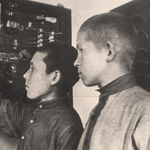 Children and War
Children and War
R.E. Romanov
“Formation of Life”: the Underage Workers of Novosibirsk in Wartime (1941–1945)
The article “Formation of Life” from the newspaper “Soviet Siberia” and the testimonial for the delegate of the second regional congress of young workers Yefim Davidovich Rapport, identified in the State Archive of the Novosibirsk region, are introduced into scientific circulation. The content of these sources is of key importance for understanding the trends and features of social mobility of adolescents, which led to the professional socialization of the young generation in 1941–1945. Publications of the sources are preceded by an introductory article, which shows the conditions and process of inclusion of young people under the age of 18 in the industry of Novosibirsk during the Great Patriotic War.
Publishing: 28/02/2021
How to cite: Romanov R.E. “Formation of Life”: the Underage Workers of Novosibirsk in Wartime (1941–1945) // Historical Courier, 2021, No. 1 (15), pp. 134–145. [Available online:] http://istkurier.ru/data/2021/ISTKURIER-2021-1-12.pdf
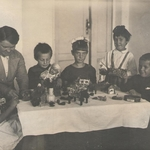 Children and War
Children and War
T.A. Kiskidosova
Fight Аgainst Сhild Homelessness and Neglect in Khakassia During the Great Patriotic War
The article deals with the history of the fight against child homelessness and neglect in Khakassia during the Great Patriotic War. The author characterizes the work of state bodies to identify and eliminate child homelessness and neglect, which was based on the protection of children and adolescents from the criminal element and the creation of necessary living conditions. Pedagogical collectives, party and public organizations, and the population were involved in cooperation with the militia. It is concluded that one of the most serious problems throughout the wartime was the extremely weak material support of children’s institutions.
Publishing: 28/02/2021
How to cite: Kiskidosova T.A. Fight Аgainst Сhild Homelessness and Neglect in Khakassia During the Great Patriotic War // Historical Courier, 2021, No. 1 (15), pp. 146–155. [Available online:] http://istkurier.ru/data/2021/ISTKURIER-2021-1-13.pdf
 Name in History
Name in History
M.V. Zabrovskaya, E.Yu. Shirokova
Pure Drawing of the Soul: to the Biography of the Artist Natalia Nikolaevna Nagorskaya
The article continues the study of unknown pages of the biography of a graphic artist, ethnographer and teacher N.N. Nagorskaya. An attempt to reconstruct the ancestral ties of the artist is made. New data about her husband P.P. Nagorsky is revealed. The article describes the first printed publications for children, in which the artist acted as the author of children’s poems and drawings. The main goal pursued by the authors of the article is to reveal the origins of the formation of the multi-faceted creative personality of Natalia N. Nagorskaya through her attitude to the family, through the understanding of the concept of the motherland. Previously unknown epistolary sources about Nagorskaya, describing her not only as an artist, but also as a poet and a deep thinker are presented.
Publishing: 28/02/2021
How to cite: Zabrovskaya M.V., Shirokova E.Yu. Pure Drawing of the Soul: to the Biography of the Artist Natalia Nikolaevna Nagorskaya // Historical Courier, 2021, No. 1 (15), pp. 156–173. [Available online:] http://istkurier.ru/data/2021/ISTKURIER-2021-1-14.pdf
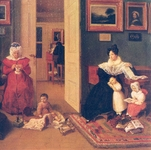 From the First Person
From the First Person
E.N. Tumanik
A Letter From Early Childhood: Materials to the V.I. Yakushkin’s Biography
The author publishes an epistolary source that sheds light on the world of early childhood in the Russian noble family of the first quarter of the 19th century. The paper introduces into scientific circulation an ego-document on the history of early childhood using the example of the family of the Decembrist I.D. Yakushkin. It contains an interesting marterial about children’s daily life, early socialization of the child, introducing him to the world of adults, the role of parents in the initial stage of development of the personality of children, pedagogical principles during this historical period. The document adds to the general source base of research on the history of childhood.
Publishing: 28/02/2021
How to cite: Tumanik E.N. A Letter From Early Childhood: Materials to the V.I. Yakushkin’s Biography // Historical Courier, 2021, No. 1 (15), pp. 174–181. [Available online:] http://istkurier.ru/data/2021/ISTKURIER-2021-1-15.pdf
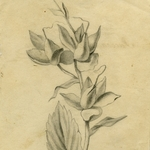 From the First Person
From the First Person
T.S. Komarova
“Worth the Respect and Praise of the Artist”: Drawings of Krasnoyarsk Merchants’ Children (Mid-19th Century)
The article is a continuation of the material published in the journal “Rodina” (No. 5, 2019) and is devoted to the artistic creativity of children from the family of Krasnoyarsk merchants Larionovs. The author presents all the identified graphic and watercolor images created in the mid-19th century by the younger generation of the Larionovs, as well as by another local merchant’s son – E.N. Tokarev. The conclusion is made about the important place of drawing training in the educational process, which was considered not only as a useful and meaningful activity, but also as a means to introduce Russian history and culture to the youth.
Publishing: 28/02/2021
How to cite: Komarova T.S. “Worth the Respect and Praise of the Artist”: Drawings of Krasnoyarsk Merchants’ Children (Mid-19th Century) // Historical Courier, 2021, No. 1 (15), pp. 182–207. [Available online:] http://istkurier.ru/data/2021/ISTKURIER-2021-1-16.pdf
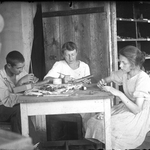 From the First Person
From the First Person
A.S. Vdovin, N.P. Makarov
Afontova Gora and Educational Archeology: Diary of Members of the Krasnoyarsk School Archaeological Club Named after I.T. Savenkov (1924–1925)
The publication introduces new archival materials of the Archaeological club named after I.T. Savenkov, which worked in Krasnoyarsk in 1923–1925 under the leadership of the famous researchers of the Stone Age of Siberia, N.K. Auerbach, G.P. Sosnovsky and V.I. Gromov. For the first time, the daily life of the archaeological expedition is shown through the diary entries of schoolchildren who participated in the excavations of the Paleolithic site of Afontova Gora at all stages of field research and cameral processing of the material. The published document reflects the innovative pedagogical experience that emphasizes the uniqueness of the research of Afotnova Gora for the Russian archaeological science not only in the 1920s, but also today.
Publishing: 28/02/2021
How to cite: Vdovin A.S., Makarov N.P. Afontova Gora and Educational Archeology: Diary of Members of the Krasnoyarsk School Archaeological Club Named after I.T. Savenkov (1924–1925) // Historical Courier, 2021, No. 1 (15), pp. 208–224. [Available online:] http://istkurier.ru/data/2021/ISTKURIER-2021-1-17.pdf
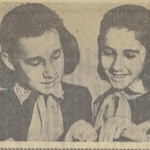 From the First Person
From the First Person
А.I. Ermolova
“Our Class is the Most Friendly”: Schoolchildren of Tomsk Writing to a Newspaper (1960–1970s)
The author analyzes 112 notes of Tomsk schoolchildren to the regional newspaper “Young Leninist”, published in the 1960s and 1970s; characterizes their main genre and thematic orientation. The identified texts can be considered within the framework of four areas: pioneer and Komsomol activities, forms of educational and pedagogical work at school, answers to editorial questions, and letters from children. Information about the pioneer and Komsomol activities, forms of education and upbringing from the point of view of children’s experience is obtained.
Publishing: 28/02/2021
How to cite: Ermolova A.I. “Our Class is the Most Friendly”: Schoolchildren of Tomsk Writing to a Newspaper (1960–1970s) // Historical Courier, 2021, No. 1 (15), pp. 225–230. [Available online:] http://istkurier.ru/data/2021/ISTKURIER-2021-1-18.pdf
![“We All Together, as We Could, Helped the Front…”: – Book Review: Fedorov I.G. Deti v Proze Voyny – Eto My: Vospominaniya Divnogortsev [Children in the Prose of War – It’s Us: Memories of the Divnogorsk Residents]. Krasnoyarsk, Papirus, 2020. 320 p., ill. “We All Together, as We Could, Helped the Front…”: – Book Review: Fedorov I.G. Deti v Proze Voyny – Eto My: Vospominaniya Divnogortsev [Children in the Prose of War – It’s Us: Memories of the Divnogorsk Residents]. Krasnoyarsk, Papirus, 2020. 320 p., ill.](/en/../images/Data/2021-01/2021-1-19z.png) World of Books
World of Books
M.V. Shilovskiy
“We All Together, as We Could, Helped the Front…”: – Book Review: Fedorov I.G. Deti v Proze Voyny – Eto My: Vospominaniya Divnogortsev [Children in the Prose of War – It’s Us: Memories of the Divnogorsk Residents]. Krasnoyarsk, Papirus, 2020. 320 p., ill.
The article presents a review of the collection of memoirs compiled by I.G. Fedorov who interviewed 75 residents of Divnogorsk – small town in the Krasnoyarsk Territory. They are members of the public organization “Children of War”, born in 1928–1945. The respondents tried to reflect the most important of their military and post-war impressions and convey their vision of the experience. Interesting in many aspects information collected in this way recreates the rear everyday life of the war years without retouching and idealization. Since the interviewed veterans lived in different parts of the USSR (the majority in Siberia), the information presented by them is a representative database that can be distributed throughout the country in a selected chronological framework.
Publishing: 28/02/2021
How to cite: Shilovskiy M.V. “We All Together, as We Could, Helped the Front…”: – Book Review: Fedorov I.G. Deti v Proze Voyny – Eto My: Vospominaniya Divnogortsev [Children in the Prose of War – It’s Us: Memories of the Divnogorsk Residents]. Krasnoyarsk, Papirus, 2020. 320 p., ill. // Historical Courier, 2021, No. 1 (15), pp. 231–238. [Available online:] http://istkurier.ru/data/2021/ISTKURIER-2021-1-19.pdf
 World of Books
World of Books
A.V. Kulikova
Modern Russian Local History Reference Books for Children
The article continues the systematic study of the formation and edition of local history reference publications in Russia; carries out the analysis of regional reference publications for children and youth issued in the last decade. This category includes guidebooks, encyclopedias and reference books aimed at young readers, and reference publications describing the youth movement and subcultures of the younger generation in the regions. The conclusion is made about the need to expand the repertoire of such literature in modern book publishing.
Publishing: 28/02/2021
How to cite: Kulikova A.V. Modern Russian Local History Reference Books for Children // Historical Courier, 2021, No. 1 (15), pp. 239–248. [Available online:] http://istkurier.ru/data/2021/ISTKURIER-2021-1-20.pdf



